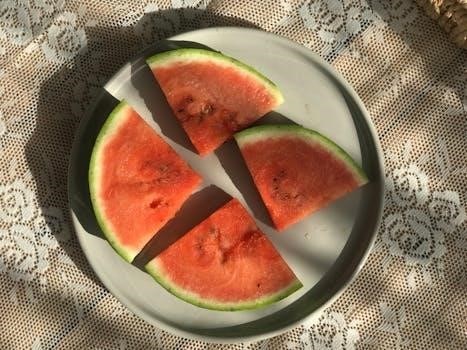
Understanding Stomach Ulcers
Stomach ulcers, also known as peptic ulcers, are open sores that develop in the lining of the gastrointestinal tract. These can occur in the stomach, small intestine, or esophagus. Contrary to common belief, they are not caused by stress or spicy foods, but mainly by inflammation.
What are Stomach Ulcers?
Stomach ulcers, often referred to as gastric ulcers, are sores that form on the lining of the stomach. These sores are a type of peptic ulcer, which can also occur in the small intestine (duodenal ulcers) or the esophagus (esophageal ulcers). They develop when the protective mucus layer of the stomach breaks down, allowing stomach acid to damage the underlying tissue. This damage results in an open sore that can cause pain and discomfort. The location of the ulcer can vary, with gastric ulcers specifically located in the stomach, duodenal ulcers in the upper part of the small intestine, and esophageal ulcers in the esophagus. Understanding the location and the mechanism behind their formation is crucial for effective management and dietary considerations. Although dietary factors do not directly cause ulcers, certain foods can exacerbate symptoms, and a tailored approach may facilitate healing and alleviate discomfort.

Causes of Stomach Ulcers
The primary causes of stomach ulcers are bacterial infection and the prolonged use of certain medications. The bacterium Helicobacter pylori (H. pylori) is a major culprit, as it can damage the stomach’s protective lining, leading to ulcer formation. This bacterium is often acquired through contaminated food or water. Another significant cause is the frequent or prolonged use of non-steroidal anti-inflammatory drugs (NSAIDs), which can also erode the stomach’s protective barrier. While stress and spicy foods were once thought to be direct causes, they are now understood to worsen symptoms rather than initiate ulcer development. Other contributing factors can include smoking, which impairs the healing process, and excessive alcohol consumption, which irritates the stomach lining. Understanding these causes is crucial for effective treatment and prevention strategies. It is important to consult a doctor if you suspect an ulcer, as proper diagnosis and treatment can significantly aid in healing and prevent recurrence.

Dietary Recommendations for Stomach Ulcers
While there isn’t a specific diet for ulcers, focusing on nutritious foods can aid healing and manage symptoms. A balanced approach, including whole foods and limiting irritants, is generally advised. Consulting a dietitian is beneficial.
Foods to Include in Your Diet
When managing stomach ulcers, incorporating certain foods can be beneficial for healing and symptom management. Prioritize soft-textured options such as ripe fruits like bananas and pears, which are gentle on the stomach. Smoothies can be an excellent way to consume nutrients without irritating the digestive tract. Soups, particularly those with a broth base and soft vegetables, can also be easily digested and provide essential hydration.
Lean protein sources like chicken, turkey, and fish are important for tissue repair and overall health. These should be prepared in ways that are easy to digest, such as baking or poaching. Oatmeal is another good option due to its high fiber content, which can help lower stomach acid levels. Ensure it’s plain and avoid adding sugary toppings. High-fiber foods in general, can aid in digestion and provide a sense of fullness, which is beneficial for ulcer management. Probiotic-rich foods, like yogurt, can help maintain a healthy gut environment. Remember to consume these options in moderation and monitor your body’s response to them.
Foods to Limit or Avoid
Managing stomach ulcers also involves being mindful of foods that can exacerbate symptoms or hinder the healing process. It’s generally advisable to limit or avoid spicy foods, as these can irritate the stomach lining and increase discomfort. Highly acidic foods, such as citrus fruits (lemons, oranges, and pineapples), should also be consumed with caution, as they can trigger heartburn or stomach pain. Furthermore, whole milk and other dairy products may worsen symptoms for some individuals, particularly if they experience discomfort after consumption.
Processed meats, like hamburgers and sausages, are often high in fat and can be difficult to digest, so it’s best to limit these. Sugary drinks and sweets should also be avoided due to their potential to contribute to inflammation. While coffee and caffeine don’t necessarily cause ulcers, they can increase stomach acid, so it’s wise to moderate intake and monitor for any adverse effects. It is also important to note that high fiber foods, should be consumed in moderation, as these can be harder to digest. Pay attention to how your body reacts to different foods and adjust your diet accordingly.

The Role of Fiber in Ulcer Management
Fiber plays a significant role in managing stomach ulcers, acting as a buffer to reduce stomach acid. It also aids in digestion and can help prevent ulcers. A diet with 20-30 grams per day is recommended by the WHO, as it eases bloating and pain.
Benefits of High-Fiber Foods
Incorporating high-fiber foods into your diet is beneficial for managing stomach ulcers, primarily due to their ability to regulate stomach acid levels. These foods, such as apples, pears, and oatmeal, can help lower the amount of acid in your stomach, which is a key factor in reducing irritation and promoting healing of the ulcer. Furthermore, fiber aids in digestion and reduces bloating, which are common symptoms associated with ulcers. Soluble fiber, in particular, is known for its gentle action on the digestive system, making it a suitable choice for those with sensitive stomachs. The inclusion of high-fiber foods is not only beneficial for managing current ulcers but also for preventing their recurrence. This is because a diet rich in fiber helps maintain a healthy digestive system, reduces inflammation, and also acts as a buffer by reducing bile acid concentration in the stomach. These effects contribute to less discomfort and pain. Additionally, foods that are rich in fiber often contain essential vitamins and minerals that support overall health and well-being, further aiding the body’s ability to heal. This makes a diet rich in fiber a cornerstone of managing and preventing peptic ulcers. They also help with reducing intestinal transit time.

Additional Dietary Tips
Maintaining a regular eating schedule is beneficial. Try to eat five to six small meals each day, instead of three large ones. This approach reduces the amount of stomach acid needed for digestion. It is also advisable to have your last meal at least three hours before bedtime.
Meal Frequency and Timing
When managing stomach ulcers, the timing and frequency of your meals can significantly impact your comfort and healing process. Instead of adhering to a traditional three-large-meals-a-day schedule, consider adopting a pattern of eating five to six smaller meals throughout the day. This approach can help to reduce the burden on your digestive system and prevent the overproduction of stomach acid, which can exacerbate ulcer symptoms. Large meals require more stomach acid for digestion, potentially leading to increased discomfort and pain. By distributing your food intake more evenly, you can minimize the fluctuations in acid levels and promote a more stable environment for healing. Eating smaller, more frequent meals can also help prevent feelings of extreme hunger, which can sometimes lead to overeating and increased stomach discomfort. Furthermore, it is advisable to have your final meal or snack at least three hours before bedtime. This allows sufficient time for digestion before you lie down, reducing the risk of heartburn and acid reflux, which can interfere with your sleep and worsen ulcer symptoms. Maintaining a consistent meal schedule can contribute to better overall digestive health and may aid in the recovery from stomach ulcers.

